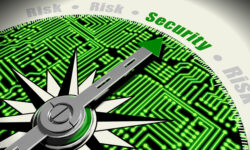Wars have been waged by nations and leaders since the beginning of time. Strangely enough, many of them have been justified with familiar rationalizations. In pre-modern eras, wars were generally waged to conquer lands to expand the territories of empires and reigns. The purpose was usually to boost their coffers through the potential collection of taxes. In some cases, a war was triggered as an act vengeance of some sort or perhaps simply to satisfy the egocentricity of an ‘important’ person. Sadly, little has changed since. Many peoples on this rather small planet continue to suffer the consequences of war. Not only does it horrifically affect those directly targeted, but it also paves the way for endless repercussions.
But we’re not here to scrutinise nor critique war. Its causes and effects are so devious and rather subjective that it is best left to politicians and expert historians to debate. It cannot be denied, however, that wars cause devastation, grief, and destitution for all concerned. It is highly uncommon for even the so-called victorious to come out of a war completely unscathed. All the historical evidence clearly shows that human civilisation has been incapable of learning from the atrocities of war, and that it will continue to wage wars among itself for one reason or another. In the modern era, we’re seeing more of these outrages enshrouded in deceptive guises to somehow lay blame on a perpetrator or to forego the inherent responsibilities. Therefore, instead of offering a rather mute proposition to bring about world peace under the current circumstances, we suggest a simple shift in the arena in which we can continue to war, but without resulting in real-world fatalities.
This proposition cites digital technology as its solution, more specifically, the metaverse. It may be comical to suggest that this new-age fad known as the metaverse could be a possible solution for real-world peace. But considering the level of intelligence and awareness that human civilisation has evidently reached, is it not more comical to suggest we continue to devastate the world in which we live? We cannot continue to cause so much havoc and destruction to this relatively small speck of dust we call planet earth. The great aspirations of our mate Elon Musk might help to find another planet for humans to live on. But for now, this is the only place that any of us can survive. So basically, if we’re to continue blowing up buildings and cities while killing and injuring millions of lives, then we ought to find an environment more befitting. Remember, nobody’s real purpose is to kill or destroy and torment lives.
The metaverse can be described as a simulated digital environment that mimics the real world. Anything that can be enacted in the real world can be replicated in the metaverse using, but not restricted to, augmented reality (AR) and virtual reality (VR) tools. Essentially, the only thing that separates the real world from the metaverse is physicality. Almost anything can be simulated. The metaverse was primarily envisioned as an ideal environment for gaming, but its malleability and scalability are beginning to unveil a much greater potential for a substantially larger audience. The emergent industries involved with these technologies are way too vast to address here, so let’s focus on how the metaverse can help relinquish the casualties of war. But firstly, let’s look at another very important component.
Some readers may already be familiar with non-fungible tokens (NFTs). Much of the current hype around NFTs has been bolstered by the involvement of high-profile celebs and big dollar transactions. This is not our concern here. Although it is a very new and highly contentious concept, it is possible to highlight its significance using a simple example. We can employ a well-known piece of artwork to explain. Most people would be familiar with the Mona Lisa. It is a unique and original painting that currently hangs in a foyer at the Louvre Museum. The museum is its sole proprietor. There are, however, countless copies and replicas of the Mona Lisa, which can be found in all shapes and forms such as oils, pastels, poster prints, digital copies, and so on. Nevertheless, although it can be infinitely replicated, there is only one original Mona Lisa, and it can be owned by only one person or entity.
It is the same for any NFT. Although it can also be infinitely replicated, there can be only one original. The source of its authenticity is in fact much more secure than that of the Mona Lisa. For example, if the Mona Lisa was stolen from the Louvre and then later found, the only way to validate its authenticity would be to have some experts inspect it. That is not the case with an NFT; quite unnecessary. NFTs cannot be replicated, modified, or tampered with in any way. They can only be copied, and thus remain a copy only. An original NFT’s authenticity and proof of ownership is securely locked to a unique metadata tag in a public ledger on the blockchain. So, proprietorship of all NFTs come as a secure and impenetrable documentation of evidence stored on a decentralised database that is publicly visible to everyone. Needless to say, that proprietorship of an NFT is more secure than proprietorship of any real-world object.
With a basic understanding of what the metaverse and NFTs are, we can now look at how these technological artefacts can be used in the context of global conflicts. The intention behind waging a war has never really been about killing people or destroying structures, although these have always been an inherent part of it. Of course, there have been cases in which massacres were committed under the guise of ethnic cleansing or mere hatred towards a particular race, but these instances have been comparatively less common. The act of waging a war is generally meant to be a strategic move to gain more power through the acquisition of land, territories, and the appropriation of its resources and/or inhabitants.
Oddly enough, much of the common intentions behind global conflicts can be enacted within a digital environment. Lands, territories, structures, and even human beings in the form of avatars can be minted as NFTs. So too can the weapons of war be minted as NFTs. Once items are minted on the blockchain, there can be no doubt as to their proprietorship and authenticity. Minting items such as weapons of war can ensure that governments continue to profit from both the production of military arsenal as well as stake their victories and defeats within an established framework, namely in the metaverse.
It is no revelation that military expenditure is intimately linked to war. Currently, global military spending is close to topping $2 trillion. This clearly indicates that wars have a substantial impact on economic resources. Recognising that war and military spending is big business, we can now focus on extracting the fatalities and human casualties from the equation. Business can continue as usual by transferring ‘war games’ to where it belongs, in the Metaverse, where it’s safe. The trick is to implement real-world connections. In other words, what happens in the metaverse must have direct consequences in the real world, all but the death and destruction.
Currently, the global gaming industry is also big business. It generates between $150-200 billion annually. And a substantial proportion of the gaming industry is abounded with war games. Fundamentally, millions of people around the world are entertained through their virtual experiences of being at war. This so-called entertainment is a direct simulation of the real world, but nobody really gets hurt. However, current environments are not configured to military requirements, yet they can be.
So why then, do some nations continue to stockpile weapons? The unfortunate and rather pathetic reason is that no one can trust their neighbours. It’s a simple matter of having the capacity to retaliate in case of an attack. So, this brings us to one of the most difficult and biggest obstacles of all, namely, disarmament. No nation wants to give up their arms…just in case! The most logical solution would be a slow transition at best. Countries can at least agree to begin managing conflicts in a virtual environment whilst retaining their “physical” weaponry. Jet fighters, helicopters tanks, and all kinds of artefacts can be minted on the blockchain. Lands and territories are already being parcelled in the metaverse. Users from a variety of metaverse platforms are currently trading property and real estate for real-world value. The point is that countries, lands, oceans, and airways can all be simulated in the metaverse. And proprietorship of all territories and borders can be authenticated through minting them on the blockchain.
So long as real-world value exists within the metaverse, the possibilities are boundless. The digital revolution is truly upon us. Now is the time to cleanse the world of the tragic outcomes of war.
All it takes is for everyone to agree to settle conflicts online if only to save lives. Nobody wants to die. Nobody wants to live in fear. We are now advanced enough to change things. Let us use technology to help make peace on earth.





 The risks faced by business decision makers when buying AI
The risks faced by business decision makers when buying AI